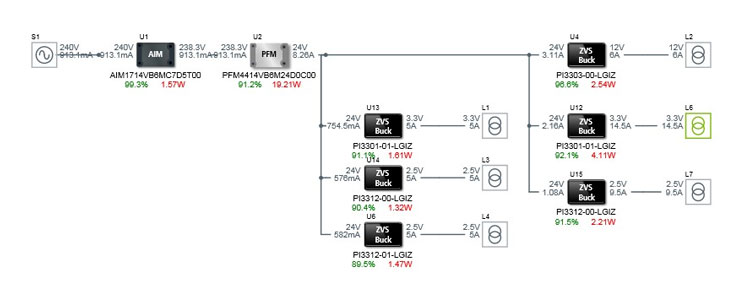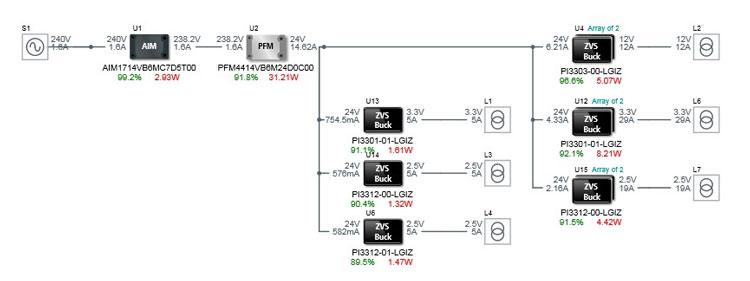The biggest challenge facing today’s power system designers
Late changes in requirements are not unusual: Vicor’s recent research found it was the biggest challenge facing today’s power system designers. In a recent project, a manufacturer of scientific instrumentation found that using the Power Component Design Methodology helped them develop an optimized power system, and quickly accommodate changing specifications.
The customer’s product used two sensors to make measurements for DNA analysis, and had previously been powered by a fan-cooled discrete power supply, which needed to provide 12, 2.5 and 3.3V rails for the sensors as well as a 2.5 and two 3.3V rails for housekeeping. The total power requirement was around 200W.
By switching from a discrete supply to a design using power components, including the PFM, AIM and ZVS Buck Regulators, the size of the power system was reduced from 161-64cm,sup>2, a saving of 60%.
During development, however, it became clear that an increase in throughput was required if the product was to remain competitive, and therefore it was decided to increase the number of sensors from two to four. This meant that the current demanded on all three sensor power rails doubled and the total power requirement increased from 200-350W, yet the size of the power system had to remain more or less the same size.
Fortunately, the engineers at this company were able to use the Power Component Design Methodology to meet this late change in specification by simply doubling the number of ZVS Buck regulators used for each power rail from one to two components. This increased the size of the power solution by just 6%, to 67cm2. An equivalent discrete solution would have needed 346cm2: an increase that simply could not be accommodated by the system.
With minimal changes required to the design, and no requirement for forced-air cooling, the design change was made in just two months, allowing the company to launch their product quickly to maximize sales and continue their leadership position in the market.



